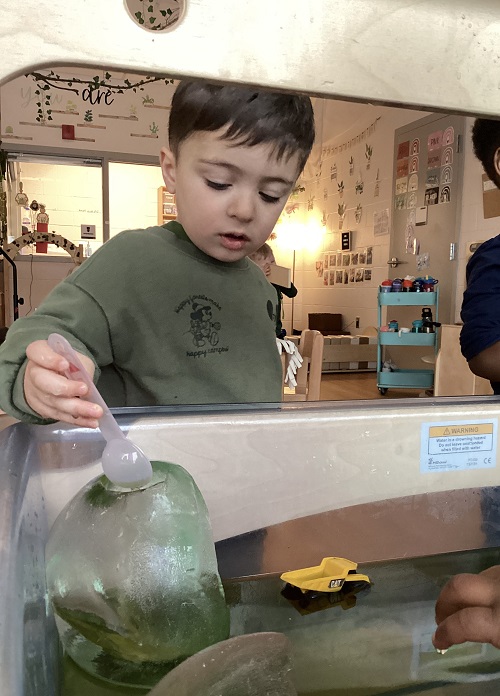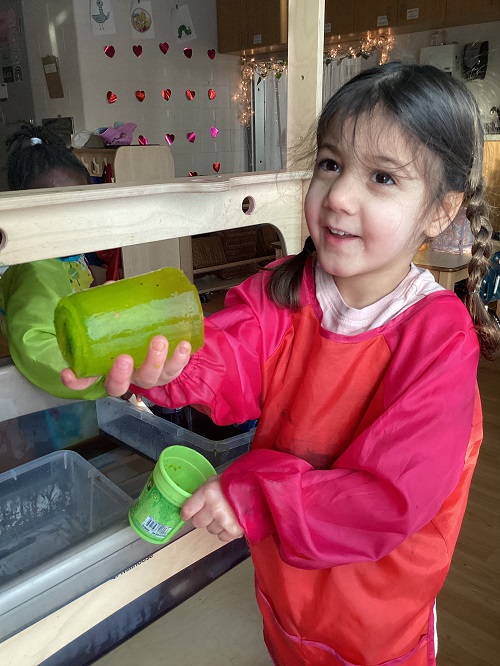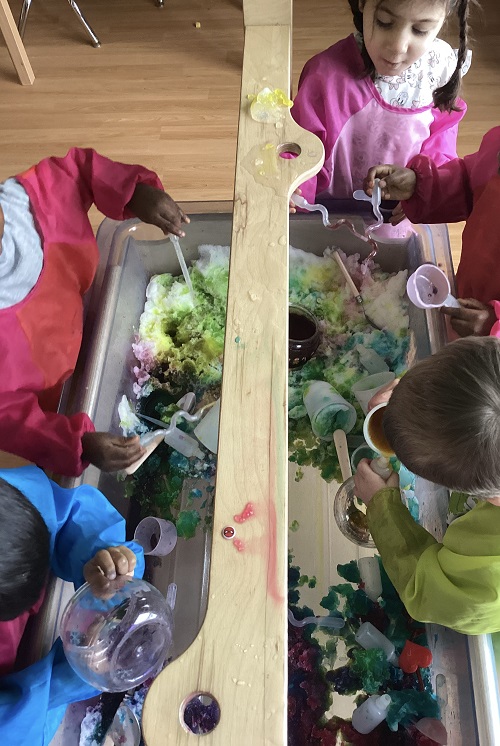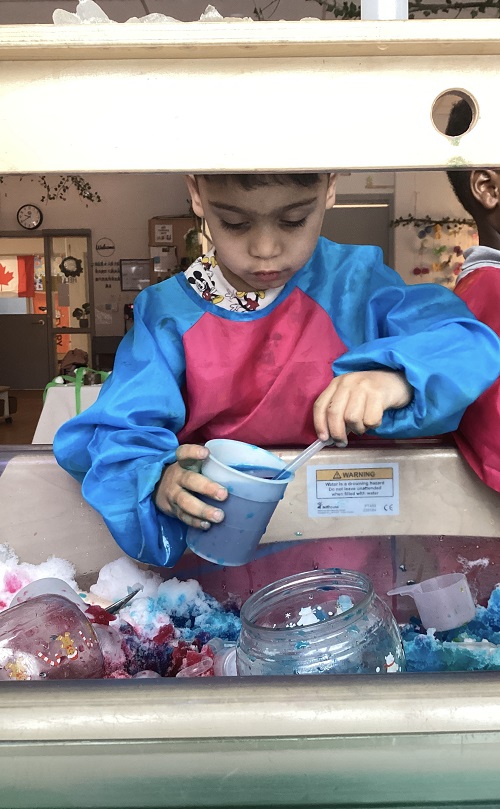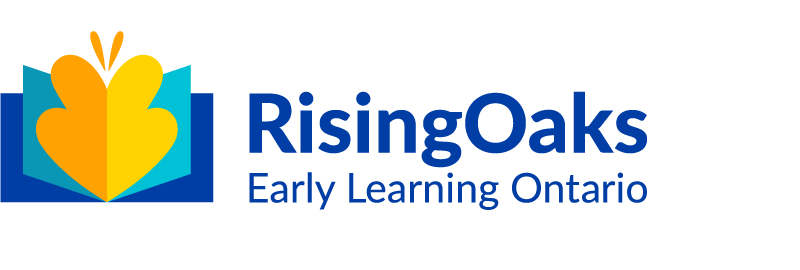Snow and ice have been a topic of interest in our classroom this month, especially with our playground being covered in snow from the recent storm and the consistent frigid temperatures outside. To maximize our learning with the snow, we have been filling our sensory bin with freshly fallen snow from the playground. Additional materials have been provided in order to extend the children’s learning across all developmental domains. The children seem to have taken a particular interest in using colours in combination with the snow. They have been conducting individual and group experiments with snow, paint, food colouring, pipettes, scoops, cups, and various containers. They’ve made many comments and observations about the snow melting into water. They’ve also discovered that combining snow and water creates a slushy and icy substance. To extend on all of these observations about the children’s emerging interests with colours, snow, and ice, we have started to fill containers with colourful water and place them outside to freeze and create colourful ice.
We’ve filled ice cube trays, silicone cupcake liners, and empty play dough containers, which turned into colourful ice that took on the shapes and sizes of their containers. “It’s like an ice cupcake!” Penelope observed. “We need to melt the ice!” Clark decided. We added a bucket of warm water to the sensory bin, along with some tools such as pipettes for the children to begin on their ice melting missions. They explored many different melting techniques, including collecting warm water with pipettes and squeezing it out on top of the ice, tapping the ice with spoons and forks, tipping the containers upside down, shaking the containers, and submerging the ice in the large bin of warm water. The children strengthened their problem solving, communication, vocabulary, descriptive language, cognitive thinking, fine motor, hand eye coordination, creativity, imagination, and many other skills in the process. “I need to crack it.” said Clark. Endless learning opportunities unfolded and many conclusions were made. “It’s so icy.” Lily explained. “I’m melting this ice.” Ayla said. “We’re making purple juice!” Ini announced. The children demonstrated determination, perseverance, and pride in their work. “I did it!” shouted Kaia as she showed off the ice that she was able to free from one of the containers.
To expand even further on the children’s evolving interest in melting the ice, we decided to create larger pieces of ice for them to experiment with. We did this by filling water balloons with water and food colouring. We set them outside to freeze overnight, and the next day the children worked together to peel the balloons off and reveal the ice inside. Mya and Arthur came up with a strategy which consisted of using a pretend saw from the tool bench to slice open the balloon. When the balloon came off, we discovered that the outer layer of the ice balls were frozen, but the inside was still full of water! The water gushed out from the inside of the ice balls, flooding the sensory bin with many colours. The children observed the unique shapes of the ice balls, which contained several holes and openings while still maintaining their spherical shape. “It’s like a pumpkin!” Arthur explained. “It looks like a cup holder” Clark decided. “It’s an ice volcano!” Penelope shouted with excitement. Ini noticed the shape that the ice took on. She gently rocked one of the ice balls back and forth. “It’s like a boat!” she said. What an engaging and unexpected learning opportunity that this provided us with as we explored the concept of liquids and solids, as well as building vocabulary with words such as cold, hard, slippery, and transparent. Many children brought over additional materials from around the classroom to explore with, including animals and construction vehicles. We discussed why the water in the balloons only partially froze, and decided to repeat our experiment and this time leave them outside for a longer amount of time. We are curious to see what will happen and look forward to continuing to implement unique ways for the children to participate and take the lead in their learning!
